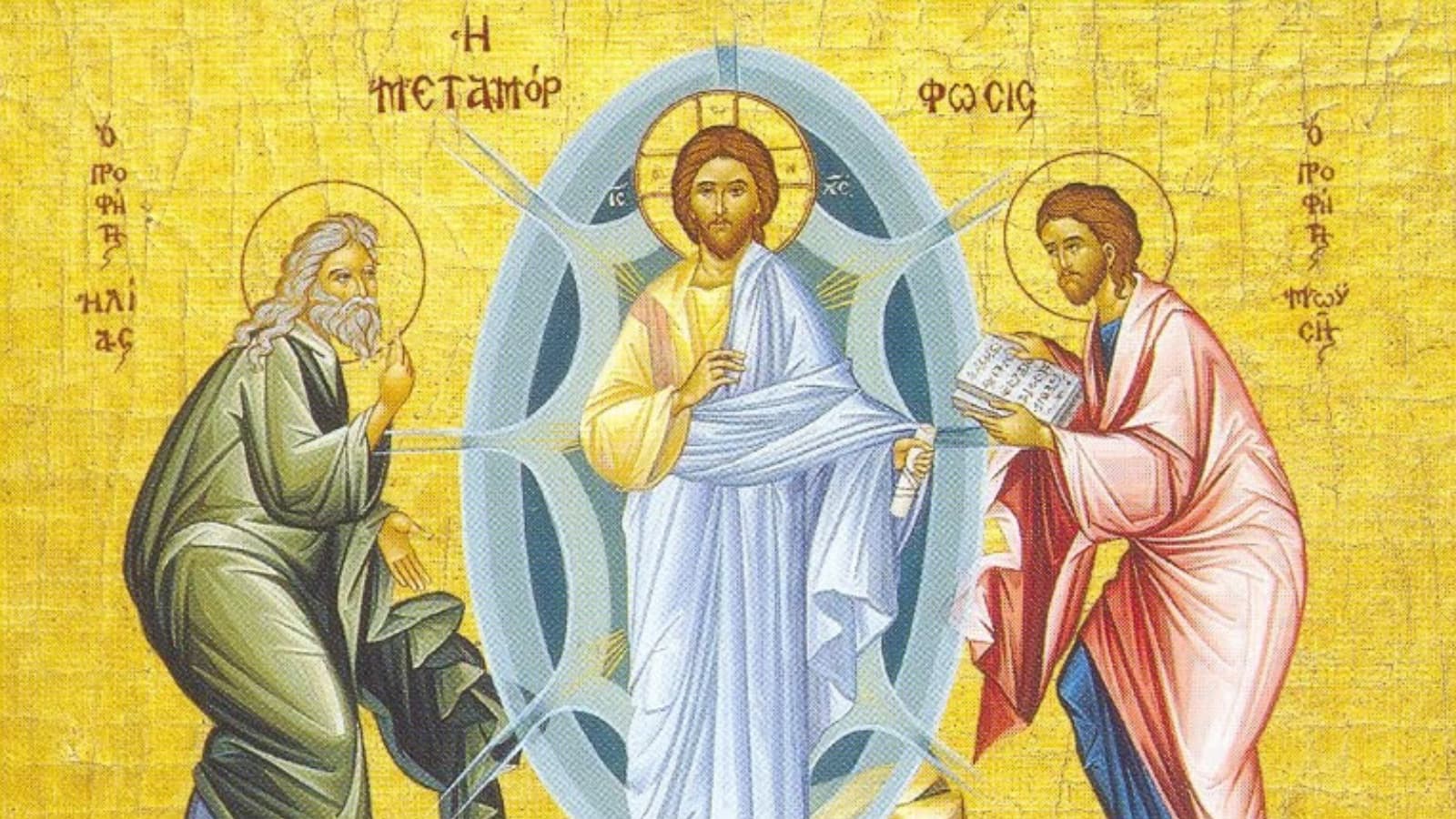Celebrated every year on August 6th, the Feast of the Transfiguration commemorates the transfiguration of Jesus Christ on Mount Tabor. In the presence of His disciples Peter, James, and John, Our Lord revealed His divine glory. But why is this Feast so significant in the eyes of the Eastern Orthodox Church? What does it tell us about Christ’s nature, and what are its implications for our own spiritual lives?
3 minutes
Biblical foundation and theological significance
We find the account of the Transfiguration in the Gospels of Matthew (17:1-9), Mark (9:2-8), and Luke (9:28-36). As Christ ascended the mountain, His appearance was transformed. His face shined like the sun and His garments became white as light. Moses and Elijah symbolize the Law and the Prophets, respectively, both of which are fulfilled in Christ.
The Church views the Transfiguration as a crucial affirmation of the Incarnation. This event confirms that Christ is not merely a “good person” or a “religious, moral teacher”, but the divine Son of God who came to redeem humanity. Indeed, the Transfiguration of Christ invites each of us to transfigure ourselves through repentance. Through this transformation, we, too, can become partakers of His divine nature (2 Peter 1:4).
Spiritual life and transformation
Just as Christ was transfigured on Mount Tabor, so are the faithful called to transform our own lives. That is the very essence of the Church’s understanding of salvation (theosis, or deification). Salvation – becoming one with God – is a lifelong journey that begins with our baptism. And it continues into eternal life.
This Feast is a joyous reminder that through Christ, we can experience a transformative relationship with God. But we must remember: we need to initiate this transformation. God will not force us to change if we are not ready or willing to do so. As we repent, as we strive to turn away from sin and embody the virtues of Christ, His light begins to shine from within us.
The blessing of fruits
During the celebration of the Transfiguration in Eastern Orthodox churches, the priest will bless various fruits brought to church by the parishioners. This tradition stems from the Israelite practice of offering the first-fruits of the harvest to God as a sign of gratitude. Doing so acknowledges that God is the source of all life, nourishment, and blessings.
The blessing of fruits on this Feast is especially meaningful because it connects ripening and perfection of the fruits of the earth to the ultimate transfiguration and spiritual renewal of humanity and all of creation in Christ. Moreover, the blessing expresses the Church’s hope for the renewal of all creation upon the Second Coming of Christ.
While grapes are particularly significant because of their connection to the Eucharist, other fruits are also blessed on this day. Fruits commonly blessed on the Feast of Transfiguration include:
- Grapes (red, white, and black varieties)
- Figs
- Pomegranates
- Olives
- Pears
- Apples
- Mulberries
- Peaches
- Cherries
- Almonds
- Plums
In addition to fruits, some Eastern Orthodox churches also bless two types of flowers: the rose and the lily.
Conclusion
The Feast of the Transfiguration of Christ holds immense importance in the Eastern Orthodox tradition. It celebrates the understanding of Christ as both fully divine and fully human, revealing His glory and inviting humanity into a transformative relationship with God. As we commemorate this feast, we are reminded of the call to shine forth the light of Christ in the world, to seek our own transformation, and to honor Christ in every aspect of our lives.
Keep Reading: Who Exactly Is Jesus Christ?


One Response
I am a jew who believe in Jésus-Christ, the Son of God who is fully God and fully man. My husband is Jewish and I converted from Catholicism to Judaisme. I believe in Mary of Nazareth who is the mother of God, the Theotokos. I enjoyed very much the orthodox teaching and I thank you very much. God bless you.